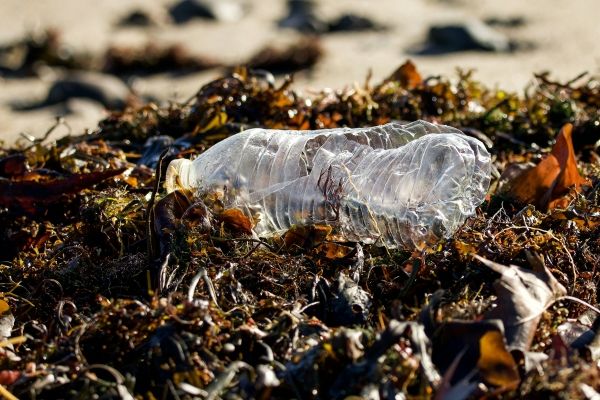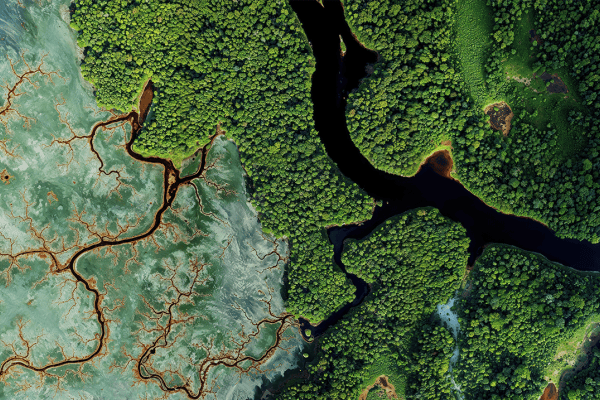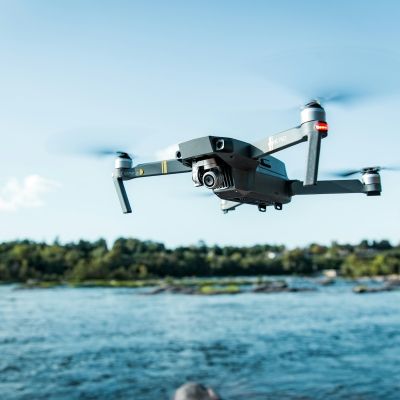Waste Watchers calls on citizens to collect drone data
VITO and River Cleanup launch unique research project combining citizen science and AI
The Waste Watchers project engages citizens to collect as many aerial images of the banks of the river Scheldt (Belgium) by using drones, Artificial Intelligence then detects on the images where most litter is located. The research project led by VITO and River Cleanup is a world first. It is the first time the general public is called upon to collect drone images to search for litter.
Waste Watchers came about following a project appeal by amai! The amai! programme aims not only to inform citizens about Artificial Intelligence, but also to actively involve them in the development of new AI applications in Flanders. The selected research projects that combine AI with citizen science receive financial support from the Flemish government.
VITO (Vlaamse Instelling voor Technologisch Onderzoek - Flemish Technological Research Institute) contacted River Cleanup putting forward the idea of initiating a research project, researcher and Waste Watchers project manager Klaas Pauly explained. “We came up with the idea of charting litter on the banks of the river Scheldt using AI. However, this is a huge area to cover. Using multiple drones that could each produce an image of a small section of the riverbank, it became possible to combine all these images. This project provides a unique opportunity to involve the wider public and deploy technology to generate awareness about a significant societal problem. We at VITO have the technological expertise in-house, but we have limited experience with the idea of engaging civilians. This is where River Cleanup comes in.”
Thomas de Groote, founder and CEO of River Cleanup: “We are convinced that technology will be able to accelerate the clearance of litter in and around our rivers. Over a period of six years, we have developed into an organisation with more than 200,000 volunteers, actively involved in 89 countries. If we combine all these helping hands with technology, we will be able to tackle litter even more efficiently and effectively. A project such as Waste Watchers complements our mission perfectly.”
Drone Imagery and AI Detection
Waste Watchers will progress in three stages:
- Throughout July and August Waste Watchers aims to collect as much drone images as possible to capture the entire length of the river Scheldt. Citizens can use their own drone or join one of the open flight days. All drone images can be uploaded via the River Cleanup website (Dutch).
- Using AI, the images are processed and converted into a user-friendly (waste) dispersal map that will clearly show how much litter is present in each zone. VITO Remote Sensing is developing specific image processing software to automatically analyse the large amount of drone images.
- River Cleanup will use the AI analysis to organize targeted clearance campaigns and send volunteers to the main ‘hotspots’.
Public flight days
Detecting litter using drones and AI is not new, but it’s a world first that citizens are called upon to collect drone data for litter detection on such a large scale. Citizen science is also gaining momentum in other domains. Projects like "CurieuzeNeuzen," where thousands of citizens contributed to monitor air pollution, heat and drought. By involving citizens in their research, scientists can gather exponentially more data. This is also the concept behind Waste Watchers.
Citizens can become a Waste Watchers in two ways:
- Use their own drone(s) to collect images:
Lots of people have drones nowadays. This summer, they can use their drone(s) to capture images of different sections of the banks of the river Scheldt.
- Join the Waste Watchers team during the open flight days:
VITO and River Cleanup are also organizing five flight days at different locations along the river Scheldt. During these public flight days in July and August, participants will not only be provided with information on the Waste Watchers project, but following a brief initiation they will have the opportunity to use one of the Waste Watcher drones to perform a flight and collect images.
Become a Waste Watcher!
Why not become a Waste Watcher! All the data about the Waste Watchers project, the five public flight days and practical information on how to upload images can be found on the Waste Watchers website.








